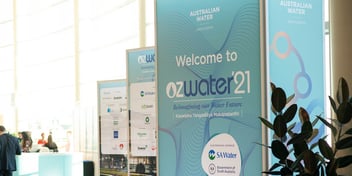Removing the guesswork from environmental monitoring
Adaptive environmental monitoring, rather than static monitoring programs, can cut costs, improve data quality and ultimately lead to more flexibility with future monitoring, according to water quality experts.
Demands from regulators should always be front-of-mind, but “monitoring for the sake of monitoring” doesn’t do anyone any favours, said Cairns Regional Council Environmental Coordinator Dr Lynne Powell and Environmental Officer Adam Schmalz.
Instead, Powell said environmental monitoring must be relevant and use the most cost-effective methods to achieve its objectives.
This makes it easier to take the results and negotiate with environmental monitors to hit the Goldilocks Zone of reporting – not too much, not too little, but just right. Powell and Schmalz will be presenting their findings on environmental monitoring best practice at the upcoming North Queensland Regional Conference in Mackay.
Cairns Regional Council started its own monitoring program back in 1998, and it remained relatively unchanged until 2010, said Powell.
“We found the information we were gathering wasn’t giving us enough confidence that we weren’t having an environmental impact,” she said.
Cairns Regional Council undertook a review of its environmental monitoring processes in 2010-11, and launched its new program in 2013.
“We changed our environmental monitoring program to an adaptive management program. This means we do something one year, look at the results, then do something different to try and substantiate what we’ve done the year before.”
So far, Powell, Schmalz and their team have looked at water toxicity monitoring, carbon and nitrogen isotope ratios, and radon tracing. The objective is to explore different lines of evidence to determine the effectiveness of different environmental monitoring pathways.
“It’s important to constantly review monitoring programs – it should be dynamic, it should have clear objectives, and it should be constantly reviewed and modified based on the outcomes you’re getting,” Powell said.
An adaptive approach also allowed the council to better separate catchment impacts, such as agricultural runoff or discharge from wastewater treatment plants.
Some of this flexibility will depend on the receiving environment, said Powell. Cairns Regional Council is in a highly regulated and sensitive one because it’s wedged between two world heritage sites: the reef and the rainforest. As such, she said there is more pressure to ensure that “there is a high level of certainty that we are doing everything we can to minimise impacts”.
“One of the stressors on these environments is water quality, so we have to substantiate what we are doing and make sure we are getting the best environmental outcome from our testing,” Schmalz added.
Networks also factor into efficient and effective environmental monitoring practices. Cairns Regional Council recently started working with the Wet Tropics Healthy Waterways Partnership. Data sharing between participants has been a boon for the council, as well as the other organisations involved.
“The more of these partnerships that can be established, the more effective monitoring will be as a whole; it takes collaboration across all sectors,” Powell said.
Schmalz called the partnership “fortuitous,” and said he looks forward to developing the relationship further.
“We still have to demonstrate that what we do here and have achieved so far has strategic value, but hopefully being part of the partnership will persuade them that this is the way to go in the future.”
To learn more about environmental monitoring best practice, register here for the North Queensland Regional Conference happening in July.

